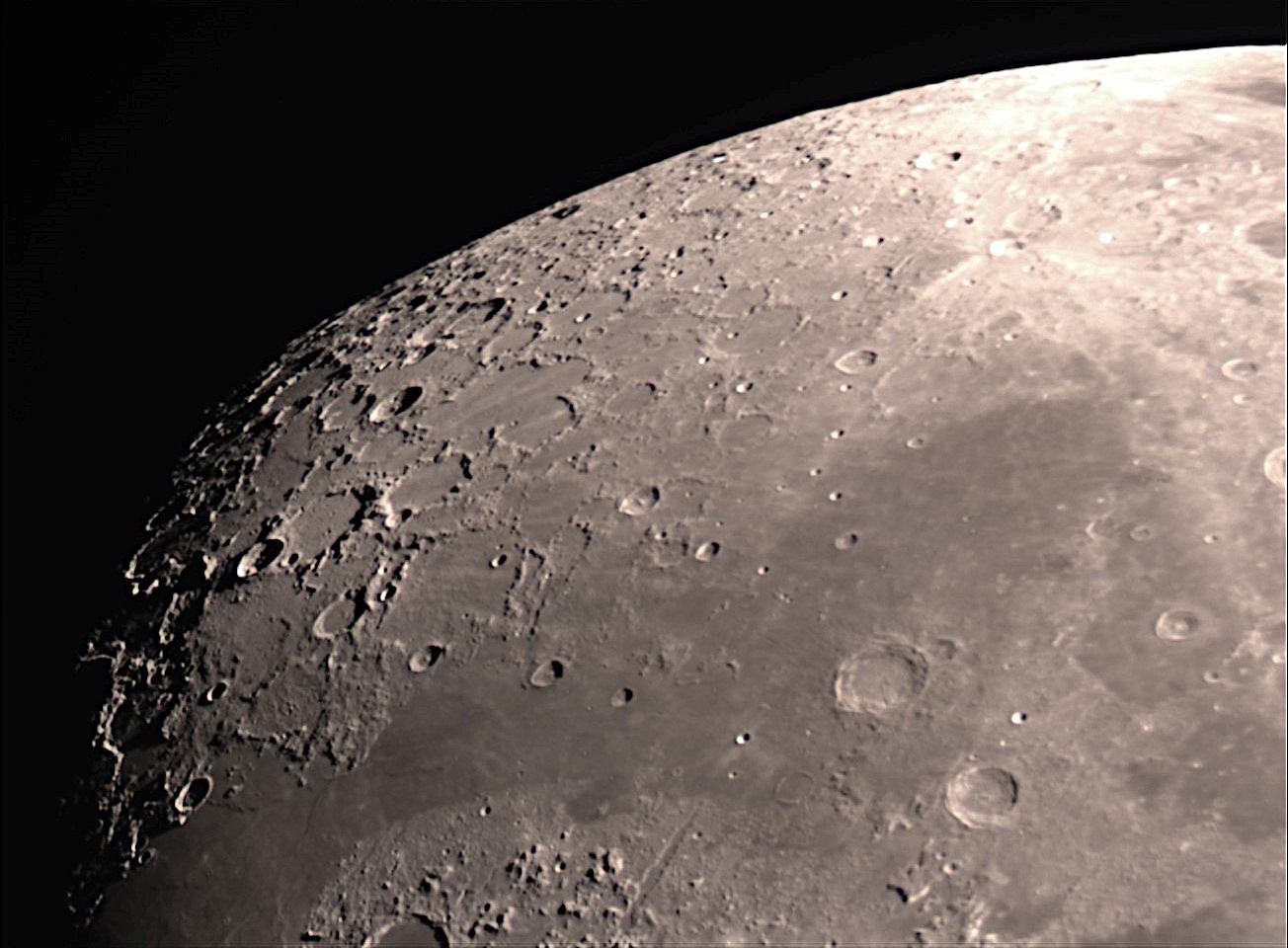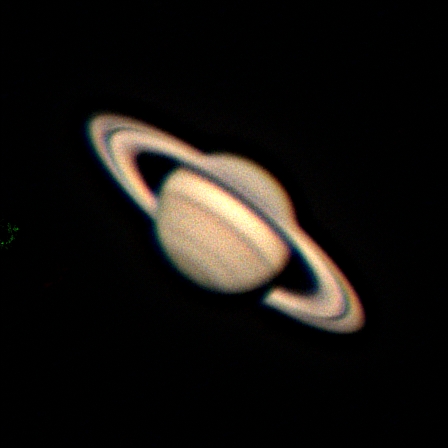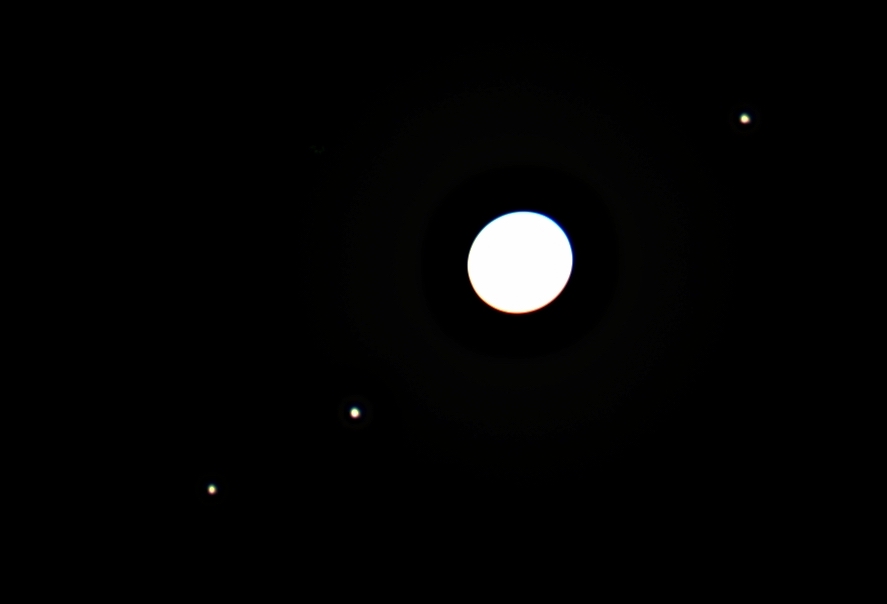This semester one of the class projects was to image Jupiter, Saturn, and the Moon. Compared to most deep sky objects, planetary bodies like these are so bright that long exposures are not needed to gather enough light to see them. However, even over a few seconds, turbulence in the atmosphere can blur such images quite severely. Because of this, a different technique called 'lucky imaging' is used. This involves recording a video of what is seen through the telescope, with each short frame of the video acting as a separate image. Over the course a few minutes, many thousands of such frames can be recorded and the odds are that at least some of these will be minimally affected (hence the term 'lucky' imaging). Processing software then selects the clearest of all the recorded frames and these are then stacked together and processed to bring out the desired features
Click on the thumbnails below to see larger versions of the final images that were created from our lucky imaging session. (All students in the class collaborated in recording the videos from which these images were created. Individual attributions refer only to post-processing.)

North pole area of waxing gibbous Moon.
(Rachel Stratton)

Craters in the Mare Nubium (Sea of Clouds)
(Emma Mitchell)

Saturn
(Rebecca Firth)

Jupiter
(Emma Mitchell / Rebecca Firth)

Moons of Jupiter
(HB Ford)
© Copyright © 2022.Tennessee Tech all rights reserved